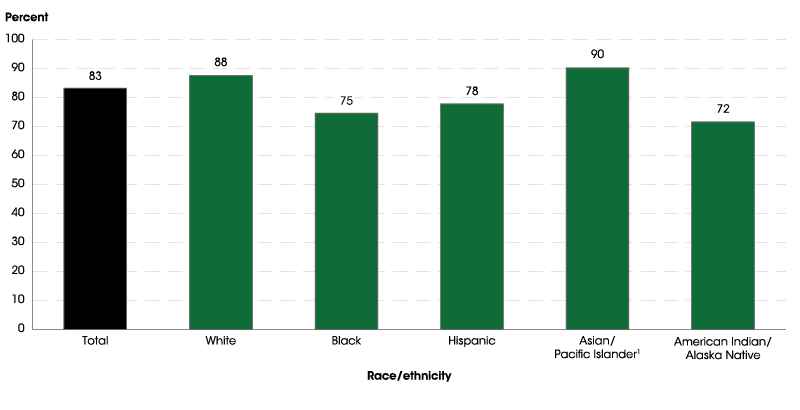A Look at High School Graduation Rates in the United States

By Sabrina Petrafesa

Graduating high school seniors all over the U.S. are preparing to take the next step in their young lives. For most that means heading off to college and for others it means plunging head first into the workforce. However, not every high schooler makes it to graduation.
The U.S. is seventh in education so graduation rates are pretty high. Eighty-three percent of high schoolers do graduate. When the numbers are broken down, its seen how race can play a significant part on whether someone graduates or not. Here's how it breaks down:
- Asian/Pacific Islanders: 90 percent graduation rate
- White: 88 percent
- Hispanic: 78 percent
- Black: 75 percent
- Native American: 72 percent
Historically, white students have often done better than minority groups because of better access to education. Currently in the U.S., white students have the second highest graduation rates, only second to Asian/Pacific Islanders. However, one speculation on why the placement of Asian students versus white students is this way is said to be the societal and familial expectations of the “model minority”--but that stereotype has many negative effects as well.

Geography and Funding
The effects of segregation in this country have lasted until this day--some schools were still being desegregated last year. Public schools are districted based on location of residents. People of color are often in lower income housing and the schools those children go to are often underfunded. Middle-upper class white students often end up in high income neighborhoods and their schools--on top of the federal and state funding--get a lot of help from parents because they can spare the time and the money to make schools better for their kids. Lower income families may not be able to sacrifice their time or money to schools when their time and money goes towards working and providing for their family.
Dropout rates are affected by income inequality. The less money a family has, the less likely their child will graduate. When a student feels like achieving a high status of wealth is impossible they may stop caring and stop working towards higher goals.
These graduation rates are nothing to scoff at. An 83 percent graduation rate is impressive but when the data is examined more closely, a problem in public education looms over these statistics. The inequality between groups of Americans is more clear. From pay inequality, to housing, to systemic educational disparities, there is no one single issue but rather many issues that must be worked on simultaneously. When schools aren’t equal, children don’t get an equal education.







